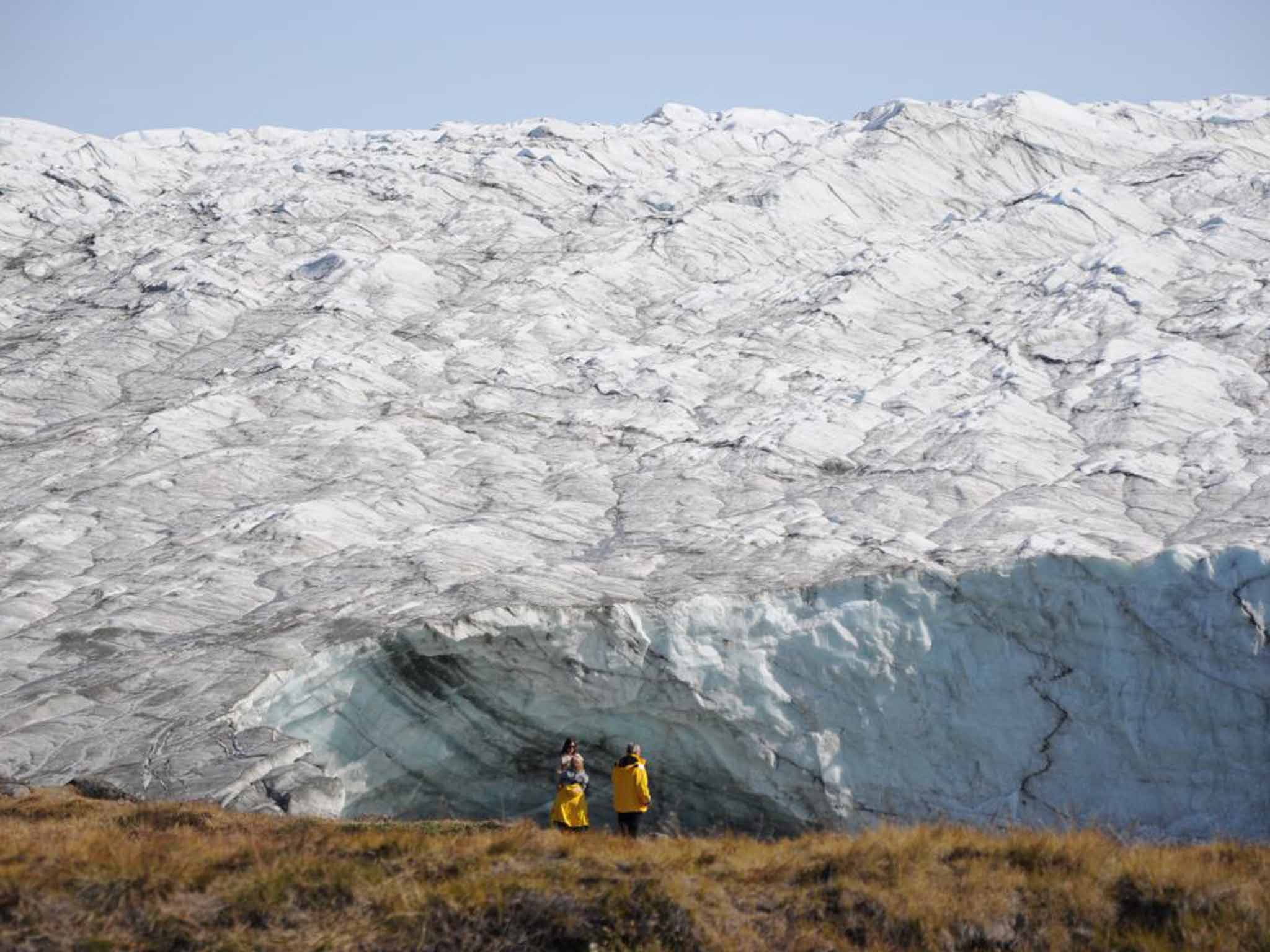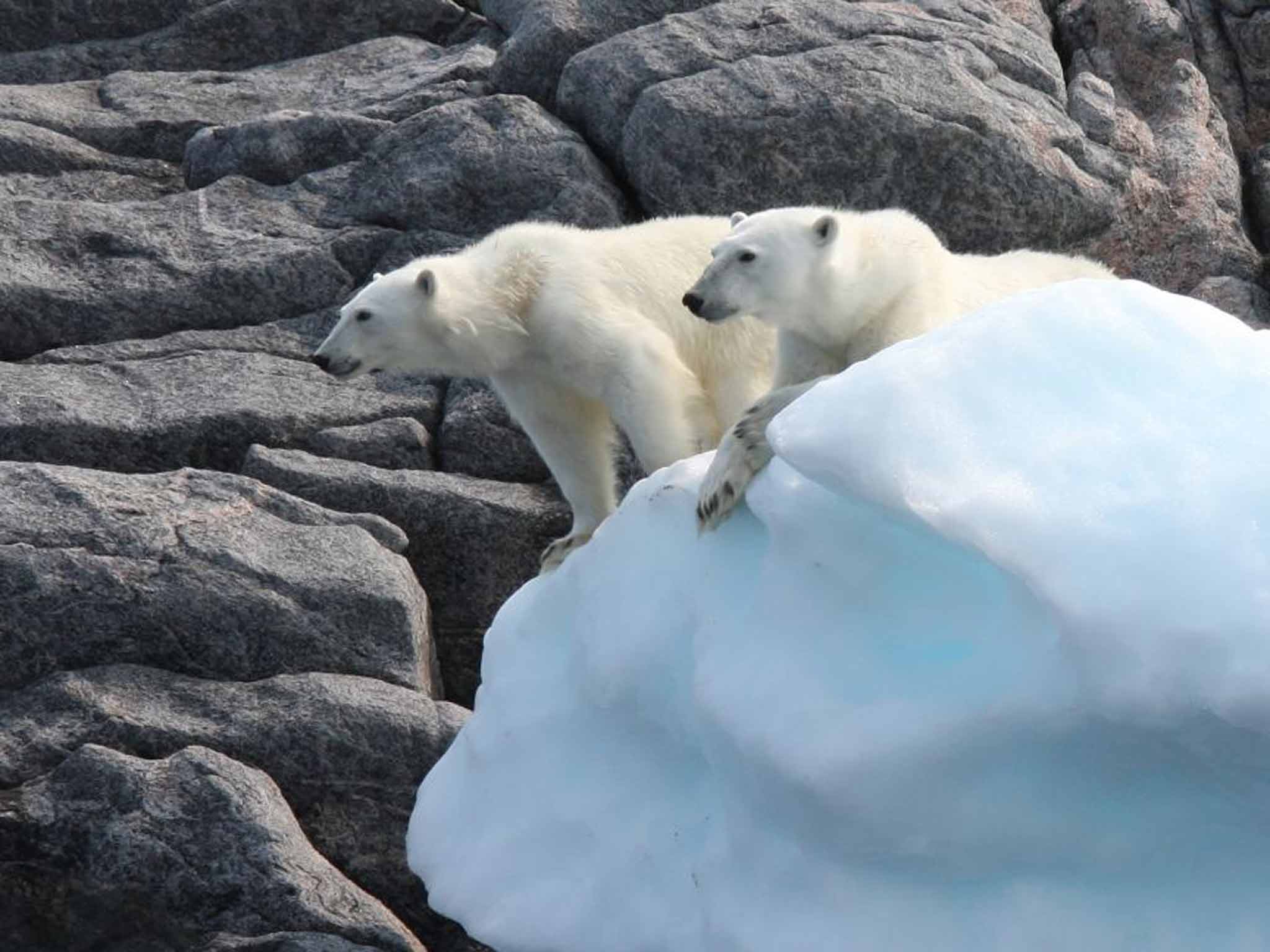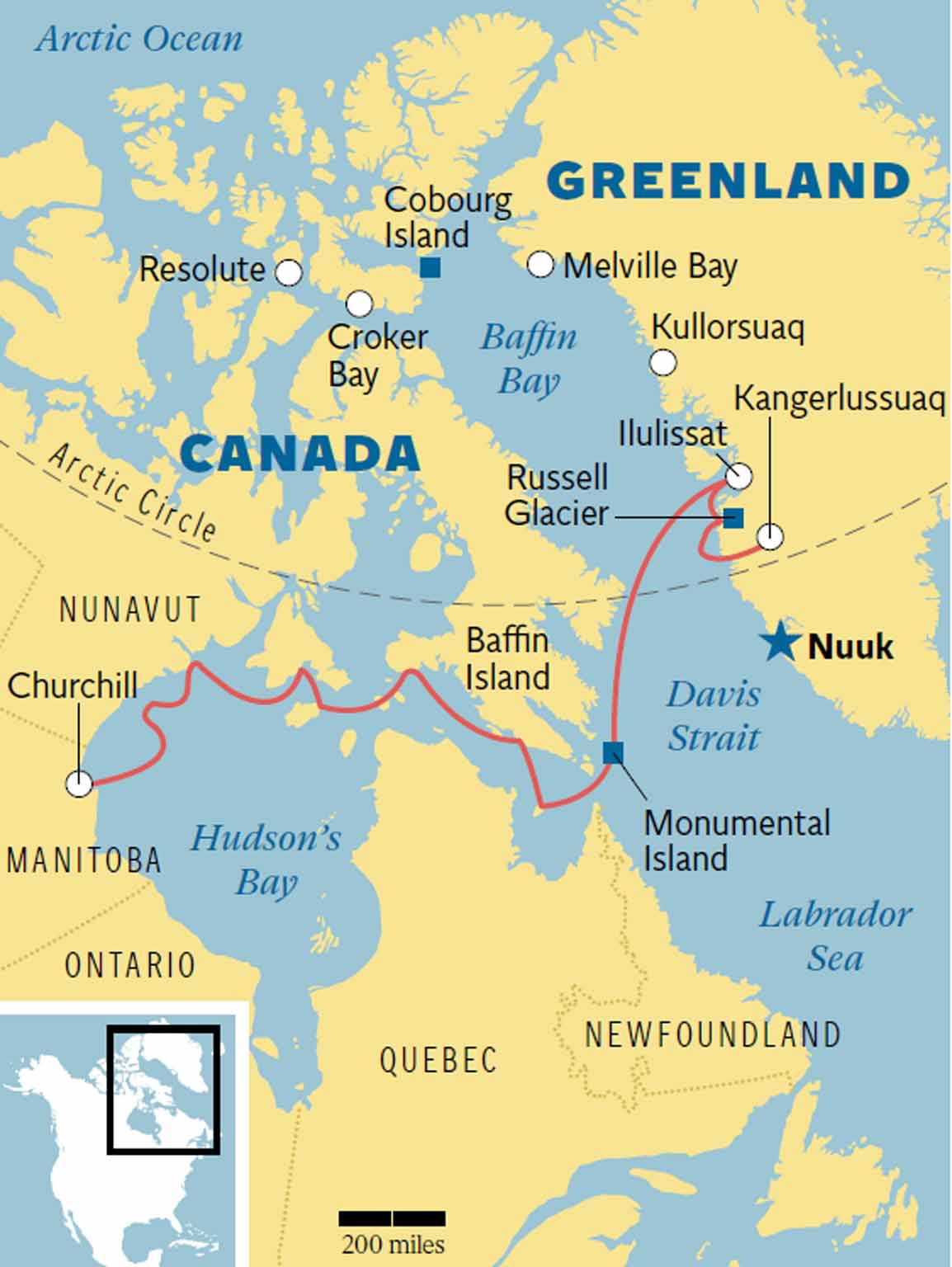Arctic cruise: A polar adventure from Greenland to Canada
A 2,000-mile excursion reveals nature at its most raw, says Paul Gogarty

The Arctic is like the Sahara, a place where everything is reduced to essence. It is a continent that, unlike so many others, we can neither domesticate nor reduce to servitude; a place where mountains come to die in polar deserts, glaciers calve vast orphan icebergs and an ineffable light washes across a dark unfathomable sea, stretching to infinite sky. In its 5.5 million square miles of emptiness, only the hardiest survive.
Our two-week summer polar voyage would visit outcrops of rock and tundra on which those hardy small human Inuit settlements have clung like Arctic lichen for millennia. Ours was to be the pioneer cruise of a new 2,000-plus mile itinerary exploring this Arctic wilderness, stretching from Greenland to mainland Canada.
The polar adventure started on the world's largest island, a place four times the size of France but with the population of Bangor. From Kangerlussuaq (population 500) our first sortie was out to the Russell Glacier on the edge of the rapidly retreating Greenland ice sheet, which still covers 80 per cent of the island. It is estimated that when, rather than if, the entire ice sheet melts, it will result in a global rise in sea levels of around six metres.
Initially, the bucolic, alpine-like summer setting lulled us into a sense of the safe and familiar. Three-billion-year-old warm red gneiss sparkled in the sun and lakes glistened as a white gyrfalcon soared above musk oxen grazing tundra embroidered with purple fireweed. Abruptly, however, the idyll ended. If the vast wall of white wasn't a big enough clue, the sudden loud crack of a celestial whip and tumble and crash of a chunk of ice the size of a house left us in no doubt that we'd arrived at the edge of the world. The curtain on "the big empty" had been pulled back and the elemental power was to set the tone for the trip.
En route to our second port of call, we were led by a cortège of floating sepulchral corpses carved from the Jakobshavn Glacier, drifting past in the opposite direction. We moored offshore and a fleet of the ship's Zodiacs ferried us across to Ilulissat, a town inhabited by 5,000 people and 6,000 sledge dogs.
In packs of our own, we tramped past a rainbow of clapboard homes and a colonial church before setting out on a four-hour hike to a logjam of icebergs calved from the Jacobshavn. Protected as a Unesco World Heritage Site, this was the fastest moving glacier on the globe, travelling at 46 metres per day in summer months and jettisoning 20 million tons of ice daily into the ocean. It's also believed to have been the source of the monster iceberg that sank the Titanic.

Up on a bluff we stood watching the icebergs 100 yards offshore. Separating us was a narrow skirt of land peppered with the stone and peat remains of Inuit communities. They somehow endured here for 2,000 years by hunting anything that moved – whale, musk ox, seal, arctic fox, birds – all of which offered sustenance through the cruellest winters on Earth.
Now it was summer but the clouds were closing in and rain was gently falling. As we put away our cameras and prepared to leave, nature suddenly demanded our undivided attention once more as one of the huge calved icebergs imploded, collapsing in on itself with a mighty roar.
By teatime, we were back on board the Sea Explorer, sailing past more giant ice cubes, toasting our journey from the fifth-floor deck where later that evening we'd enjoy a barbecue in sunshine that continued shining long after many of our party had disappeared to bed.
Between excursions ashore, each day we'd attend lectures by the passionate expedition leaders who seemed collectively to boast more PhDs than some universities. These lively talks focused on everything from glaciology and wildlife to Inuit culture and the doomed expeditions of Europeans seeking the Northwest Passage.
Sailing across the Davis Strait – which separates Greenland and Canada – on the fifth day we entered Canada's largest and newest province, Nunavut (it separated from the Northwest Territories in 1999). Just off Baffin Island, we anchored at the incongruously named Monumental Island, a sheer skirt of shattered, glacially scoured gneiss forced upwards and stretching barely more than half a mile in length.
Soon our 10-strong kayaking party was skirting the shoreline, feeling some trepidation at paddling for the first time in the Arctic Ocean where creatures that we'd only known in zoos jealously guard their territory. Ten minutes after we'd set off – and before we'd had a chance to get used to our dry suits and kayaks – we spotted a female polar bear and cub lazing on the final vestiges of snow at the high-tide line, 50 yards away. The mother sniffed the air and then rubbed herself on the snow, her calf nuzzling into her.
Val Lubrick, our irrepressible kayak leader, lowered her voice: "The calf's around two and this'll be her last summer with Mum. Next year she's on her own." For a while, the bears stared at the strange creatures in brightly coloured kayaks and then lost interest, unwilling to expend any unnecessary energy.

Half an hour later, having snaked our way through a narrow inlet, we came upon another polar bear; a male this time, larger and less indifferent to our presence as it stood on its hind legs and rolled its head from one side to another. I felt suddenly very grateful that Val was carrying a rifle. As our presence was clearly disturbing the bear, Val signalled for us to move away and start heading back towards the ship. As we did so, a pod of maybe 30 two-ton walruses crashed down like they were competing in the Olympic 100m butterfly and then rose up again to reveal huge tusks, which glistened ominously.
Each day on the Sea Explorer was like the first day on Earth: the air felt like it was being breathed for the first time and the boundless ocean shone like lacquered teak. Over subsequent days, we would watch humpback, bowhead, beluga and pilot whales from the ship. On land, in Zodiacs or in our kayaks, we'd spot caribou, gyrfalcon, seal and more polar bears as well as visit Inuit settlements and old outposts of the Hudson's Bay Company, established as a fur trader in the 17th century and more recently the official outfitter for the Canadian Olympic team. Each evening our lavish dinners would be preceded by another talk as we edged westwards like the icebergs, always in happy and expectant transition.
On our final night on board, right on cue, the Green Flash visited as the Aurora Borealis shimmered across the sky. And, on our final morning, we received the ultimate pilot to lead us to our disembarkation docking at Churchill: wave after wave of belugas with their calves, frolicking and feeding before heading out for winter once again in the frozen North.
Getting there
Quark Expeditions (020 3514 2712; quarkexpeditions.co.uk) offers the 13-day In the Foosteps of Franklin itinerary from £4,845pp, plus a mandatory transfer package costing £1,140. Included in the price are all meals on board, excursions, airport transfers, hotel accommodation, both before and after the trip, and flights from Copenhagen to Greenland and from Resolute to Toronto. Flights to and from the UK are not included.
Subscribe to Independent Premium to bookmark this article
Want to bookmark your favourite articles and stories to read or reference later? Start your Independent Premium subscription today.

Join our commenting forum
Join thought-provoking conversations, follow other Independent readers and see their replies
Comments